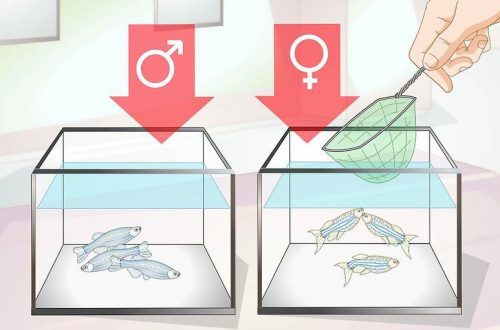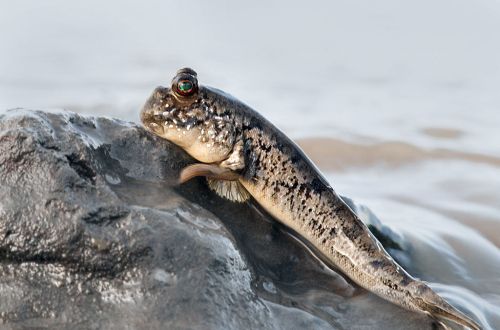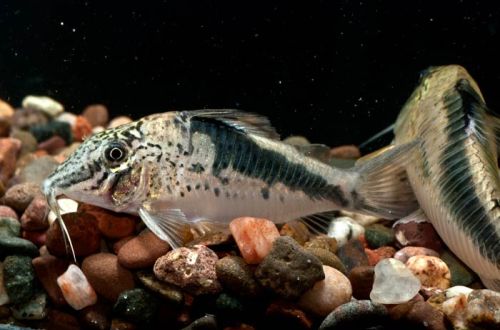
Gobitis Hasselt
Hasselt’s gobitis, scientific name Lepidocephalichthys hasselti, belongs to the Cobitidae family. Hardy and unpretentious to the conditions of keeping the fish. Compatible with many popular aquarium fish. Considered a good choice for the beginner aquarist.

Contents
Habitat
It comes from Southeast Asia from the territory of Thailand, Laos, Cambodia, Vietnam, as well as from the islands of Java and Sumatra. It is most often found in shallow pools with stagnant water and small rivers with a slow current. The substrates are soft silty, littered with foliage, branches and various snags. Water conditions change depending on the season. In the dry period, the water begins to “bloom”, and in the wet it can be clear or very cloudy.
Fish are able to adapt to quite extreme conditions. For example, they were found in a shallow puddle half a meter deep connected with a small river by a small channel, there was no vegetation in it, and the substrate was mud. Wild animals used this drying up reservoir as a source of water. Some fish waited out the dry season in puddles that looked like mud porridge.
Brief information:
- The volume of the aquarium – from 50 liters.
- Temperature – 23-26°C
- Value pH — 5.5–7.5
- Water hardness – soft (2-10 dGH)
- Substrate type – soft sandy
- Lighting – subdued
- Brackish water – no
- Water movement is weak
- The size of the fish is 4–6 cm.
- Food – any drowning
- Temperament – peaceful
- Content in a group of at least 3–4 individuals
Description
Adult individuals reach a length of about 4-6 cm. The body is elongated, elongated, the fins are translucent. On the head near the mouth are sensitive antennae that help in the search for food. Depending on the region of origin, the body pattern changes, but the main color remains gray with a silvery belly. Sexual dimorphism is weakly expressed, females are almost indistinguishable from males, the latter are smaller.
Representatives of the family Cobitidae (Gobitis) have small spines-thorns for protection, usually hidden in the skin. In case of danger, they release spikes out. Such a situation may be an attempt to catch fish for replanting or cleaning the aquarium. It is worth being careful, otherwise the fish may get tangled in the net or injure the aquarist when trying to pick it up.
Food
They feed by sifting the substrate with their mouths and retaining the small zooplankton that live in it. In a home aquarium, the soil will also be sifted. Only sinking foods (dry flakes, pellets) should be fed, as well as live or frozen foods such as bloodworms, daphnia, brine shrimp.
Maintenance and care, decoration of the aquarium
A group of 4-5 fish can be content with a 50 liter aquarium. The design uses soft sandy soil, in which the fish will sometimes dig in, leaving only their eyes on the surface. Accordingly, gravel and similar hard substrates must not be covered. Another important design attribute is driftwood, artificial or natural. To give the water a characteristic “tea” shade, Indian almond leaves are added. The recommended lighting level is subdued. Aquatic vegetation is not required, but if desired, shade-loving species should be preferred.
Keeping Gobitis Hasselt does not require much time. The fish is very unpretentious. Maintenance comes down to regular cleaning of the soil from organic waste and weekly replacement of part of the water (15–20% of the volume) with fresh water.
Behavior and Compatibility
Peaceful calm fish, get along well with other species. Due to their small size, large bottom fish should be avoided. The best option is flocks of small cyprinids or characins that live in the water column or near the surface.
Breeding / breeding
At the time of writing, no successful breeding of Gobitis Hasselt charrs in a home aquarium has been recorded.
Fish diseases
By their nature, non-ornamental fish species that are close to their wild relatives are quite hardy, have high immunity and resistance to various diseases. Health problems can be the result of inappropriate conditions, so before starting treatment, check the quality and parameters of the water. If necessary, bring all values back to normal and only then begin treatment, if necessary. Read more about diseases, their symptoms and methods of treatment in the section “Diseases of aquarium fish”.





